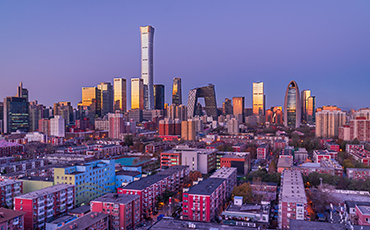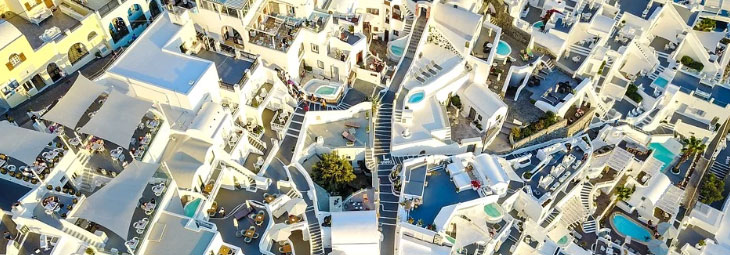


By Zhang Wenzhong
Vice Chairman of the Urban Planning Society of China, Researcher at the Institute of Geographic Sciences and Natural Resources Research, Chinese Academy of Sciences
The relationship between urban physical examination and urban renewal
The following is an excerpt:
Urban health check is a regular analysis, assessment, monitoring and feedback of the problems and achievements of urban planning, construction and governance, to accurately grasp the status of urban development, monitor urban dynamic changes and promote the healthy and sustainable development of the city. Urban renewal, on the other hand, is a process of self-regulation and self-adaptation by the city in response to changes in environmental conditions, evolution of development dynamics, adjustment of actors, target needs and value orientations. From the connotations of both, it can be seen that the urban health check is the basis of urban renewal, and the problems identified and the results of the health check are the basis for formulating urban renewal plans, determining key renewal areas and specific projects. At the same time, urban areas or renewal projects that have undergone urban renewal need to undergo a re-examination to form a closed-loop system of "urban examination - problem identification - urban renewal - re-urban examination".
The urban check-up is based on a problem-oriented approach, identifying the difficulties and bottlenecks that residents face in their urban life and work, and finding the weak points that affect the sustainable development of the city. For example, is it convenient for residents to see a doctor, go to school or travel? Can the infrastructure and public service facilities in the community or block meet the needs of the residents? Do megacities have the problem of overpopulation? Are the various functions of the city evenly distributed in space? Are the urban features and historical and cultural protection in place? How capable the city is of dealing with all kinds of emergencies and disaster risks, etc. In summary, the urban health check should reflect the people-oriented concept, assess and diagnose the problems existing in urban planning, construction and governance from different spatial scales such as housing, community, block and urban area, and reflect the demands of residents in various aspects such as urban residence, life, travel and environment.
The problems identified by the urban health check provide a basis for urban renewal and promote the precision and scientific nature of urban renewal actions. Through the assessment of the current status of the city, real-time monitoring and dynamic early warning, the shortcomings and deficiencies in urban planning, construction and governance can be identified in a timely manner, and a rapid assessment, monitoring and feedback mechanism can be formed to clarify the difficult problems and key tasks for urban renewal. Therefore, the results of the city's physical examination and assessment can provide action plans and key tasks for urban renewal. For example, the urban health check focuses on housing safety issues, as well as aging and damage to various old pipelines and conduits such as water, electricity, gas and heat; Problems such as insufficient facilities for elderly care and child care in the community. Urban renewal must confront these issues and carry out renovation and reinforcement of buildings, renewal of old residential areas, infrastructure improvement and the construction of complete communities. In response to problems such as incomplete cultural, recreational and commercial facilities and inadequate protection of historical and cultural heritage found in the district health check, urban renewal work such as revitalizing the commercial district and protecting the historical and cultural district should be carried out.
Urban health checks can also directly reflect the residents' demands for urban planning, construction and governance. According to the residents' wishes, sort out the timing and priorities of urban renewal projects, and tailor urban renewal and governance projects based on the residents' needs and wishes. The urban-scale check-up and renewal mainly focus on the transformation of the urban development mode, understanding whether there are problems in terms of function, structure, layout and control during the urban development process, with the goal of improving the carrying capacity, competitiveness and livability of the city, and solving the problem of the city's sustainable development capacity. The urban transmission to the neighborhood focuses on how to increase the vitality of population and economic development through functional optimization, facility improvement, cultural and neighborhood renovation. The block further extends to the community and residential area, focusing on the daily life of the residents, solving the problems of living environment and living facilities, paying attention to the needs of the elderly and children, with the goal of improving the quality of the community and residential area and providing a comfortable living environment for the residents.
In summary, the urban health check works around the goals and tasks of urban renewal and is integrated into the urban renewal action. Problems identified in urban planning, construction and governance at different spatial scales such as housing, residential areas (communities), blocks and urban areas (cities) are further refined into problem lists, project lists, rectification lists, etc., as the focus of urban renewal. To provide a more precise, standardized and scientific basis for promoting urban renewal work such as the renovation of old residential areas, the transformation and upgrading of traditional factory areas, the revitalization of commercial districts and the protection of historical and cultural districts.
Source:
<https://mp.weixin.qq.com/s/kIvkz4OM_nYEEm7k4TRBsA>
Translated & Edited by Jin He